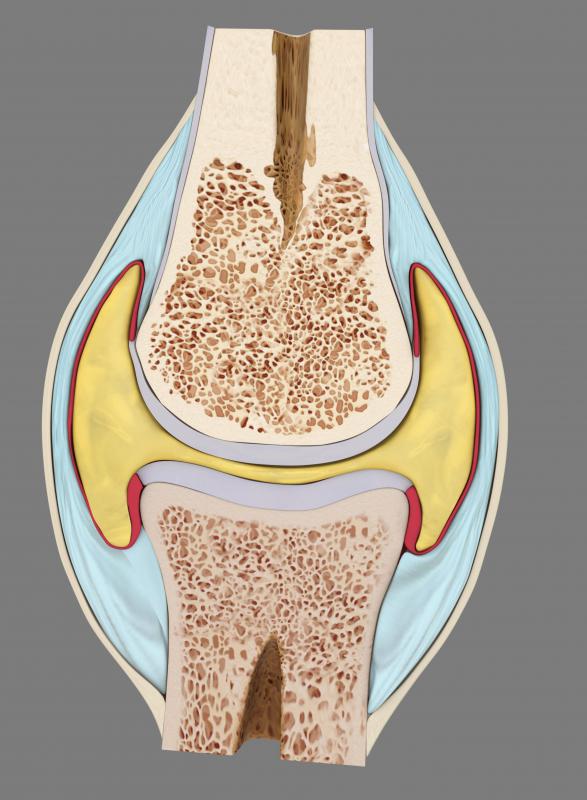At WiseGEEK, we're committed to delivering accurate, trustworthy information. Our expert-authored content is rigorously fact-checked and sourced from credible authorities. Discover how we uphold the highest standards in providing you with reliable knowledge.
What Is Synovial Tissue?
Tissue is a general term that refers to cells with a specialized function that collect together. Synovial tissue is a particular group of cells that are optimized to act as membranes for joints and coverings for tendons. While providing protection from physical damage, synovial tissue also helps to keep joint lubrication liquid inside the joints, which allows for movement of different parts of the body. Medical conditions where synovial tissue may be damaged include swollen joints and arthritis.
Connective tissue, of which synovial tissue is one kind, are all those types of cells that provide support and connections between the cells of the body. Ligaments, which attach a bone to anther bone, and tendons, which attach muscle to bone, are both types of connective tissue. Some joints with minor movement are held together by a substance called cartilage, but most joints involve cartilage along with synovial tissue.

Joints are locations in the body where one set of bones has to be attached to another set to allow for movement. Examples include the elbow and the knee, which both work like hinges on a door. Other joints may involve small bones, such as those in the wrist, which glide over each other; others again move in a system like a ball and socket, such as the shoulder.

The body uses other types of joints in various places, but most often, anywhere where the body has to move relative to itself, a synovial joint is present. Synovial cells, which are specialized to produce the collection of cells called synovial tissue, grow together in a sterile capsule covering the joint area, underneath a tougher layer of connective tissue. Inside the synovial covering, or synovial membrane, is fluid.

This fluid is produced by the synovial tissue which encapsulates it. Its function is to help the bones of the joint move freely relative to each other, in the same way as lubricant allows engine parts to run smoothly. Production of fluid is the main reason for the presence of synovial cells. The bones inside the joint are themselves covered in a thin layer of cartilage, which the synovial membrane uses as its anchor point for attachment.

Inside the synovial membrane, apart from fluid, may be other forms of tissue. Some joints contain pads of cartilage for an increased resistance to pressure. Bursae are also present in some joints, and these are extra capsules of synovial tissue and fluid that add more lubrication than otherwise to the joint. Damage to the synovial areas of the body can produce pain, swelling and reduced movement in the affected joints.
AS FEATURED ON:
AS FEATURED ON:
















Discuss this Article
Post your comments